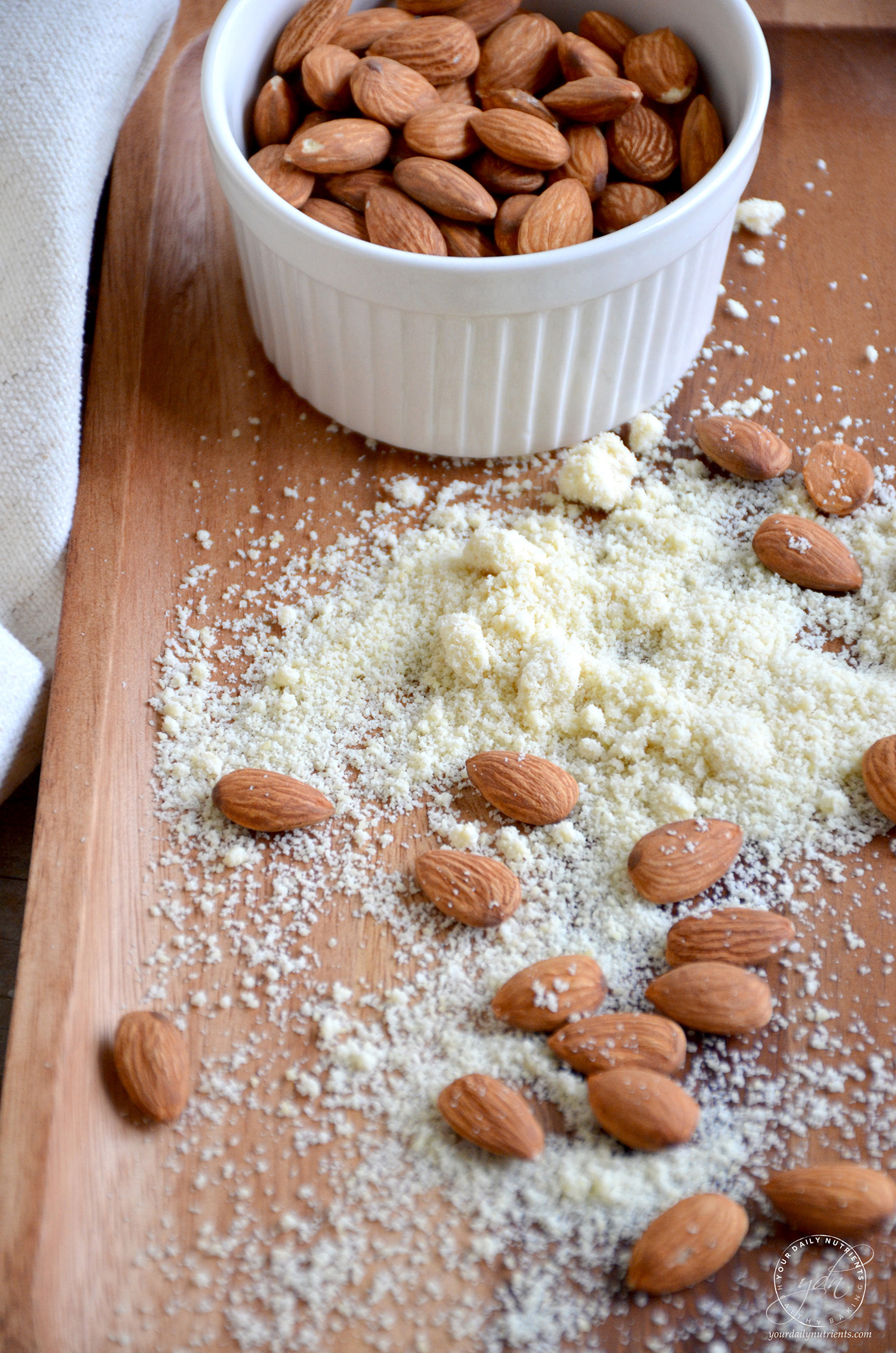ALMOND FLOUR - HARINA DE ALMENDRA
You will see I used almond flour A LOT in my recipes. Here I will explain all you need to know about this nutritious ingredient, key on most of my recipes!
Almond flour is made from ground almonds. The process involves blanching almonds in boiling water to remove the skins, then grinding and sifting them into a fine flour.
Almond flour is not the same as almond meal, despite the fact that their names are sometimes used interchangeably. Almond meal is made by grinding almonds with their skins intact, resulting in a coarser flour.
This difference is important in recipes where texture makes a big difference.
Nutrition and impact on your blood sugar
Almond flour is high in protein (21% by weight), magnesium, manganese, vitamin E and monounsaturated fats, low in carbohydrates, and contains fiber.
Magnesium is abundant in almond flour. It's involved in many processes in your body and may provide several benefits, including improved blood sugar control, reduced insulin resistance and lower blood pressure.
Foods made with refined wheat are high in carbs, but low in fat and fiber. This can cause high spikes in blood sugar levels, followed by quick drops, which can leave you tired, hungry and craving foods high in sugar and calories.
Conversely, almond flour is low in carbs yet high in healthy fats and fiber. These properties give it a low glycemic index, meaning it releases sugar slowly into your blood to provide a sustained source of energy.
This could mean that almonds' low glycemic properties and high magnesium content may help control blood sugar in people with or without diabetes.
Interestingly, almonds decrease postprandial glycemia (post-meal blood glucose levels), the presence of insulin in the blood and oxidative damage. This is due mostly to its fat content!
Fortunately, almond flour is both wheat-free and gluten-free, making it a great alternative for baking for those who can't tolerate wheat or gluten.
Baking with almond flour
Almond flour is easy to bake with. In most baking recipes, you can simply replace regular wheat flour with almond flour.
The downside of using almond flour over wheat flour is that baked goods tend to be more flat and dense. This is because the gluten in wheat flour helps dough stretch and traps more air, which helps baked goods rise.
Almond flour is also higher in calories than wheat flour, bur remember: count nutrients not calories!
If you're looking for a low-carb flour that's rich in nutrients, almond flour is a great choice!!
🇪🇸 Spanish:
Veréis que uso mucho harina de almendras en mis recetas. Aquí os explicaré todo lo que necesitáis saber sobre este ingrediente nutritivo, clave en la mayoría de mis recetas!
La harina de almendras está hecha de almendras molidas. El proceso consiste en blanquear las almendras en agua hirviendo para eliminar las pieles, luego molerlas y tamizarlas en una harina fina.
Nutrición e impacto en el azúcar en la sangre La harina de almendras es rica en proteínas (21% en peso), magnesio, manganeso, vitamina E y grasas monoinsaturadas, baja en carbohidratos y contiene fibra.
El magnesio es abundante en harina de almendras. Está involucrado en muchos procesos en el cuerpo y puede proporcionar varios beneficios, incluido un mejor control del azúcar en la sangre, una menor resistencia a la insulina y una presión arterial más baja.
Los alimentos elaborados con trigo refinado son ricos en carbohidratos, pero bajos en grasa y fibra. Esto puede causar picos altos en los niveles de azúcar en la sangre, seguidos de caídas rápidas, que pueden dejarlo cansado, hambriento y ansioso por alimentos ricos en azúcar y calorías.
Por el contrario, la harina de almendras es baja en carbohidratos pero alta en grasas saludables y fibra. Estas propiedades le dan un índice glucémico bajo, lo que significa que libera azúcar lentamente en la sangre para proporcionar una fuente sostenida de energía. Esto podría significar que las propiedades glucémicas bajas y el alto contenido de magnesio pueden ayudar a controlar el azúcar en la sangre en personas con o sin diabetes.
Curiosamente, las almendras disminuyen la glucemia posprandial (niveles de glucosa en sangre después de las comidas), la presencia de insulina en la sangre y el daño oxidativo. Esto se debe principalmente a su contenido de grasa!
Afortunadamente, la harina de almendras no contiene trigo ni gluten, por lo que es una excelente alternativa para hornear para quienes no pueden tolerar el trigo o el gluten.
Hornear con harina de almendras
La harina de almendras es fácil para usar en repostería. En la mayoría de las recetas, simplemente se puede reemplazar la harina de trigo normal con harina de almendras. La desventaja de usar harina de almendras sobre harina de trigo es que los productos horneados tienden a ser más planos y densos. Esto se debe a que el gluten en la harina de trigo ayuda a estirar la masa y atrapa más aire, lo que ayuda a elevar los productos horneados.
La harina de almendras también tiene más calorías que la harina de trigo, pero recuerda: cuenta los nutrientes, no las calorías!
Si está buscando una harina baja en carbohidratos que sea rica en nutrientes, la harina de almendras es una excelente opción!
Check us out on Facebook & Instagram for our latest healthy content!
Hello Food Lovers!
We created YOUR DAILY NUTRIENTS in order to share and educate with healthy recipes and Diabetic tips.
To motivate you to achieve a healthy lifestyle and control your diabetes at your best!
Follow us on Instagram to get the latest content on healthy baking and recipes!















